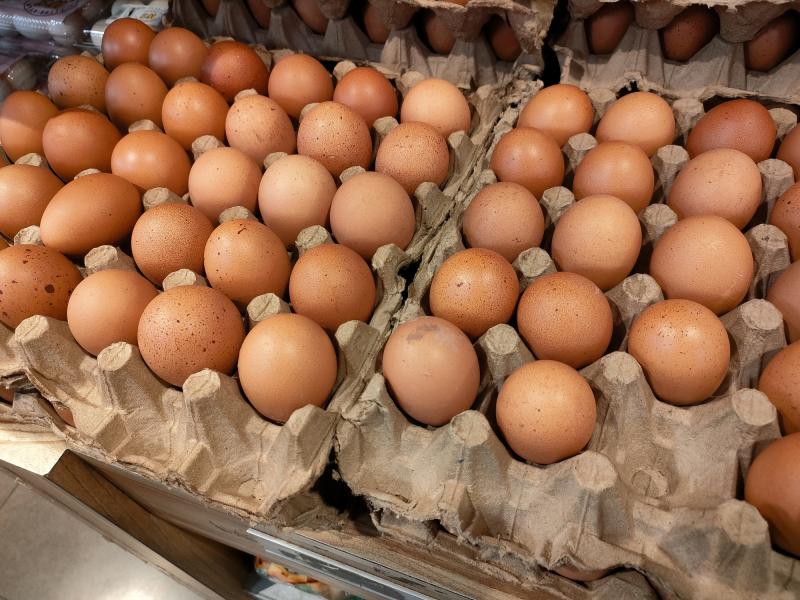
The ongoing outbreak of bird flu has infected at least one person in the U.S. and has raised questions about how safe poultry meat and eggs are to eat right now.
So far, there have been no reported cases of spread among people, or of a person contracting this strain of avian influenza (also known as H5N1) from contaminated egg or poultry products, according to the U.S. Centers for Disease Control and Prevention (CDC). The CDC says that the current public health risk is “low.”
Here’s what scientists know right now about bird flu and food safety.
Eggs
The largest producer of eggs in the country, Cal-Maine Foods in Texas, temporarily stopped production at one of its facilities on Apr. 2 after H5N1 was identified there. The company also culled more than 3% of its flock in response to the outbreak.
Eggs from infected chickens are unlikely to be on supermarket shelves, the FDA says. That’s because in the time that it takes to detect an avian flu virus in a flock of egg-laying chickens, 99.99% of eggs would not have reached store shelves yet, since they would still be in the process of being distributed. That prediction comes from a model for estimating the risk of human exposure from avian flu outbreaks that was developed by the U.S. Department of Agriculture (USDA) and the U.S. Food and Drug Administration (FDA) in 2010. According to that assessment, even if an infection among chickens was discovered after eggs had hit supermarket shelves, more than 98% of potentially contaminated eggs could be removed from stores after a recall was issued.
Read More: Is Eating a Plant-Based Diet Better For You?
Another safeguard: pasteurization inactivates viruses in eggs and therefore eliminates most risk to human health. Properly handling eggs—including avoiding cross contamination of any raw products with other foods—and cooking them at least until the yolks and whites are firm will further reduce any risk of infection.
Poultry meat
Like it is with eggs, the risk of buying infected chicken at the grocery store is very low, according to the USDA and FDA. The model predicted a 95% probability that infected poultry would not make it to stores, since the virus would lead to relatively high mortality among the chickens, and farmers would be aware of the infection before the poultry was prepared for sale. However, the scientists determined that there is a 5% chance that infected chickens reaching market size would be slaughtered and sold before the virus was detected.
Read More: Why Your Diet Needs More Fermented Pickles
The best way to prevent that from happening is to increase testing of flocks on farms, the risk assessment concluded. Farmers can also detect illness in their flocks by monitoring how much feed the birds eat, since birds tend to eat less when they’re sick. According to the risk assessment, keeping track of feed consumption can lead to a 96% chance that an infected chicken is not processed for market, and can reduce the risk of human disease by 23 fold, while checking for signs of sickness leads to a 95.5% chance that infected chickens are not processed for market and reduces the risk of human illness by 8-fold.
As an added safety measure, keep raw chicken away from uncooked foods and cook chicken to 165°F, which likely inactivates any virus that could make people sick.

